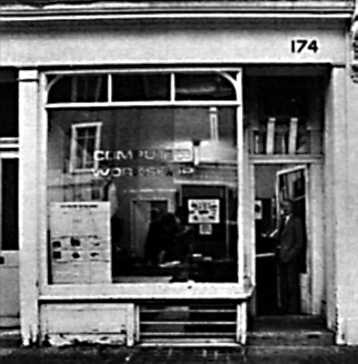| The SWTP Effect -The Microcomputer Revolution In The UK |
| Written by Historian | ||||
Page 1 of 3 In this third and final part of our look at the early days of the microcomputer revolution as it happened in the UK, we focus on the amazing and idiosyncratic SWTP family of computers which played the role in the UK that the Altair did in the US. In the early 80s a collective madness descended on the UK. A craze the like of which had never been seen, sprang from a very unlikely source - the computer. Many readers will remember what happened when home computers first came on the scene, while others will be far too young to have known about it. But fewer people know about the run up to those momentous days and the strange goings on of nearly 40 years ago. You certainly didn’t bump into one every day. They mostly cost a small fortune and lived in banks, Fortune 100 companies or universities. Some schools were lucky enough to have access to a machine - but usually by sending in decks of punched cards to a computer center, often with a turn around of a week. There wasn’t really any way for the average person to get interested in computing because they just didn’t get anywhere near one. There were a small number of desktop calculator designs around 1972 but that was a close as anyone got to a computer without spending large sums of money. You also have to remember that electronic calculators were only just becoming cheap enough to be commonplace. Before this calculations that could not be done using mental arithmetic or often involved a slide rule or a mechanical calculator. Altair makes an impactOf course we now know that the world was about to change. In 1974 Intel produced the 8080 microprocessor chip and the next step was the Altair personal computer. Featured as a project on the cover of Popular Electronics, an American magazine that wasn't read very much in the UK. As a result, and because it was expensive after importation, it had little impact in the UK. It was relatively unknown and when enthusiasts did stumble upon this marvel - it was still too expensive and mainly only used in semi-professional installations. These were the smallest possible microprocessor systems aimed at electronic engineers and comprising a processor chip, a cheap hex keyboard and a seven segment numeric indicator for output. They were produced by the chip manufacturers to try to get their microprocessors used other equipment. These machines weren't really up to being programmed - but this didn't stop anyone.
Apart from development kits we in the UK more or less did without until one day, in 1976, a small shop, called Computer Workshops opened in Earls Court. This business was started by John Burnett and Gordon Ashbee who believed that the market for personal computers was potentially huge. They reasoned that the hobby market was just the tip of the iceberg. There were thousands of small businesses still processing information by hand, simple tasks that could be easily done using even a moderately powerful computer. Computer Workshops opted to import, not the Altair or any of its imitators, but a 6800-based machine made by South West Technical Products (SWTP) on the grounds that this machine had the advantage of being both cheap and as expandable as the Altair, because it was a bus-based machine. |
||||
| Last Updated ( Thursday, 16 August 2018 ) |

